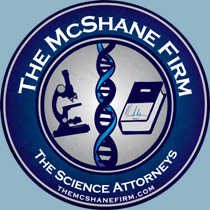Throughout this series of posts we have examined the Thorton-Nakumura protocol that is used throughout the United States for the prosecution of illegal possession marijuana. A fair examination of the question reveals that there is no validity to the notion that the 3 test regimen produces a valid conclusion that the unknown examined in fact […]

The myth of specific identification of Marijuana in criminal court Part 6: Is the combination of all three tests create a “good” testing scheme?
The modern day prosecution for the unlawful possession of marijuana is based upon a three test regime involving microscopic morphological examination, modified Duquenois-Levine colorimetric testing, and Thin Layer Chromatography. Each of these three tests are non-specific for THC which is the pharmacodynamically active ingredient which makes marijuana illegal. The question becomes is this three test […]

The myth of specific identification of Marijuana in criminal court Part 5: What is Thin Layer Chromatography? Is it a “good” test?
All prosecutions for the unlawful possession of marijuana requires as an essential element of the crime for the government to advance proof that the unknown submitted for testing is in fact marijuana (contains THC). Can the government actually do that based upon its typical testing method? In this series of posts we are going to […]

The myth of specific identification of Marijuana in criminal court Part 4: What is the modified Duquenois-Levine test? Is it a “good” test?
In this series of posts we are going to examine this seemly simple question: What is the goal and the purpose of testing of unknowns generally? How do we best design a test for marijuana? How is most marijuana testing conducted in the United States? What is microscopic morphological examination? Is it a “good” test? […]

The myth of specific identification of Marijuana in criminal court Part 3: What is microscopic morphological examination? Is it a “good” test?
In this series of posts we are going to examine these seemly simple questions: What is the goal and the purpose of testing of unknowns generally? How do we best design a test for marijuana? How is most marijuana testing conducted in the United States? What is microscopic morphological examination? Is it a “good” test? […]

The myth of specific identification of Marijuana in criminal court Part 2: How is most marijuana testing conducted in the United States?
In 2006, more than 829,000 people were arrested in this country for marijuana-related offenses alone. Since 1937 with the passage and adoption of the Marihuana Tax Act, marijuana has been effectively prohibited in the United States. Literally millions upon millions of people have been accused of possessing marijuana. The question becomes are these convictions scientifically […]

The myth of specific identification of Marijuana in criminal court Part 1: What is the goal and the purpose testing of unknowns generally?
In many courtrooms all across the United States today, a state analyst opines under oath that a unknown leafy green vegetable like substance is in fact marijuana. The question becomes, in the typical case, is this a valid conclusion? Is it the whole scientific truth? In this series of posts we are going to examine […]

The myth of specific identification of Marijuana in criminal court
In courts all across the United States evidence is presented in the prosecution of those charged with possession (either misdemeanor or felony) that the green vegetable substance seized is in fact marijuana. The way that this is typically presented in the courtroom is as an absolute and as a specific qualitative measurement. This series of […]

More on the forensics of synthetic drugs: synthetic cannabinoids and synthetic cathinones
The forensic world continues to grapple with the forensics of identifying synthetic drugs and their pharmacological and analytical chemistry characteristics. As we have written before just because there may be laws on the books or emergency or permanent regulations outlawing certain drugs and their analogues doesn’t mean that they can actually prove scientifically that the […]

Are fingerprint identifications merely an opinion?
The short answer to the question to question that is the title of the post is an unequivocal yes! There is a very good article that was published in the Daily Telegraph which is a daily morning newspaper that has a wide distribution primarily in the United kingdom, but also internationally. It is presented here […]

Hemolysis in a blood sample when using headspace analysis by GC-FID
Hemolysis is a particular problem in the proper quantification of EtOH in a blood sample. First let’s define what it is: What does it look like? Red blood cells without (left and middle) and with (right) hemolysis. If as little as 0.5% of the red blood cells are hemolyzed, the released hemoglobin will cause the […]


